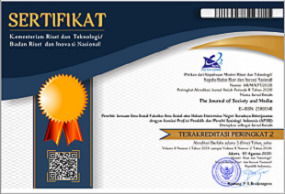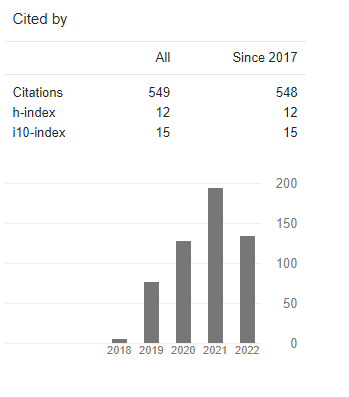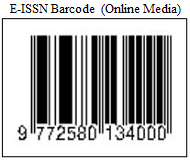Comparison of Beauty Standards and Body Images on Disney Princesses and Female Villains
DOI:
https://doi.org/10.26740/jsm.v7n1.p174-192Kata Kunci:
beauty standards, body images, female villains, Disney princess, mass mediaAbstrak
Seiring dengan meningkatnya peran media massa, orang menjadi lebih terobsesi dengan gambaran ideal tentang “kecantikan dan tubuh yang ideal”. Dengan serial Disney Princess, persepsi media tentang "kecantikan dan tubuh ideal" bahkan menyebar ke khalayak yang lebih muda. Penelitian ini membahas tentang perbandingan standar kecantikan dan citra tubuh pada Disney Princesses dan Penjahat Perempuannya. Metode analisis isi kuantitatif yang terdiri dari dua kategori, yaitu Beauty Standards and Body Image digunakan untuk menganalisis visualisasi Putri-Putri Disney dan Penjahat Perempuannya. Enam indikator untuk Standar Kecantikan dan tiga untuk kategori Citra Tubuh. Setiap indikator diuji menggunakan tes dengan karakteristiknya masing-masing. Penelitian ini tidak menemukan perbedaan Standar Kecantikan dan Citra Tubuh antara Putri-Putri Disney dan Penjahat Wanita. Namun, dua indikator dalam Standar Kecantikan dinyatakan signifikan, yaitu Warna Rambut dan Penampilan Fisik. Pada akhirnya, Disney masih perlu membenahi dan lebih menyadari pesan seperti apa yang mereka berikan kepada penonton.
Referensi
Beauty Standards Over Time for Women - Deep Science. (2022). https://deepscience.co/beauty-standards-over-time-for-women/
Bryant, S. L. (n.d.). The Beauty Ideal: The Effects of European Standards of Beauty on Black Women.
Emilio Hernandez, by B., & Hughes Peggy Gordon Miller, P. (2012). Using Cultivation Theory to Analyze College Student Attitudes about the Dating Process Following Exposure to Romantic Films.
Gilbert, K. (2002). The body, young children, and popular culture. Gender in Early Childhood.
Graber, D., & Mendoza, K. (2012). New media literacy education (NMLE): A developmental approach. Journal of Media Literacy Education, 4, 8.
Hayes, A. F., & Krippendorff, K. (2007). Answering the Call for a Standard Reliability Measure for Coding Data.
Hohlstein, L. A. and S. G. T. and A. J. G. (1998). An application of expectancy theory to eating disorders: Development and validation of measures of eating and dieting expectancies. Psychological Assessment, 10, 49.
Johnson, R. M. (2015). The evolution of Disney princesses and their effect on body The evolution of Disney princesses and their effect on body image, gender roles, and the portrayal of love image, gender roles, and the portrayal of love. https://commons.lib.jmu.edu/edspec201019/6
Mcilhargey, M. (2021). Why Is Tan Skin Considered Beautiful in America? We Explore | POPSUGAR Beauty. https://www.popsugar.com/beauty/tan-skin-american-beauty-standards-48410548
Neuendorf, K. A., & Janstova Sharon Snyder-Suhy Vito Flitt, P. (2006). James Bond 007 Analysis Codebook.
Ridayati. (n.d.). Implementation Evaluation Of Minimum Standard Of Urban Settlement Using Mann Whitney Test The Lecturer of STTNAS Yogyakarta.
Riffe, D., Lacy, S., Watson, B. R., & Fico, F. (2019). Analyzing Media Messages.
Sarwer, D. B. , G. T. A. , & D. E. R. (2003). BEAUTY AND SOCIETY. In Seminars in Cutaneous Medicine and Surgery.
Sekayi, D. (2003). Aesthetic Resistance to Commercial Influences: The Impact of the Eurocentric Beauty Standard on Black College Women. The Journal of Negro Education, 72(4), 467. https://doi.org/10.2307/3211197
Shodiq, A. F., Hidayatullah, S., & Ardianto, Y. T. (2018). Influence Of Design, Information Quality And Customer Services Website On Customer Satisfaction. Article in International Journal of Scientific and Engineering Research. http://www.ijser.org
Smolak, L., & Murnen, S. K. (2011). The sexualization of girls and women as a primary antecedent of self-objectification.
Stearns, P. N. (2002). Fat History: Bodies and Beauty in the Modern West. New York University.
Turner, L. H., & Richard, W. (2007). Introducing communication theory: Analysis and application. McGraw-hill.
Zhu, M. (n.d.). The Berkshire Scholar.
Unduhan
Diterbitkan
Cara Mengutip
Terbitan
Bagian
Lisensi
Hak Cipta (c) 2023 The Journal of Society and Media

Artikel ini berlisensi Creative Commons Attribution 4.0 International License.
 Abstract views: 3985
,
Abstract views: 3985
, PDF Downloads: 4024
PDF Downloads: 4024












